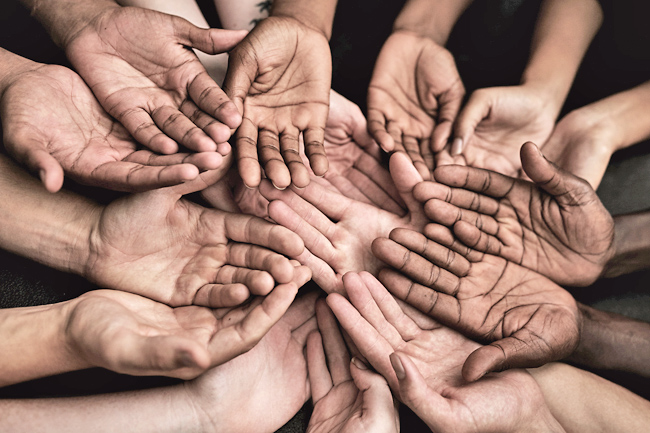This year, an alarming 692 million people are projected to endure extreme poverty worldwide, a figure that underscores the challenges faced by global efforts to address economic deprivation.
Worsened by escalating costs, lingering impacts of the COVID-19 pandemic and ongoing global conflicts, the mission to reduce poverty by half within this decade appears daunting, especially for low-income countries already strained under economic pressures.
“Today, much of the world continues to recover from the socio-economic impacts of the COVID-19 pandemic, which caused extreme poverty to rise in 2020 for the first time in decades,” said United Nations Development Programme (UNDP) Administrator Achim Steiner.
In a statement commemorating the International Day for the Eradication of Poverty, observed annually on October 17, he highlighted the global setback in poverty reduction and underscored how oppressive debt burdens have become a major hurdle, especially for low-income nations.
“On average, low-income countries allocate more than twice as much funding to servicing net interest payments as they do to pay for health or education services,” he explained.
Such financial priorities not only deepen poverty but also erode the basic infrastructure needed to lift individuals out of it.
This year’s theme, “Ending Social and Institutional Maltreatment: Acting Together for Just, Peaceful and Inclusive Societies”, emphasises a neglected dimension of poverty, Steiner noted – its pervasive social and institutional underpinnings.



“Whether experienced through negative attitudes, stigma, discrimination, or through the structural violence embedded in institutions, it represents a denial of fundamental human rights,” he said.
Social exclusion, unequal access to education, healthcare, and legal identity, and exclusionary policies that often target the poor create cycles of inequality that can be hard to escape.
This cycle is especially severe in conflict-affected regions where weak institutions and social divides further entrench poverty.
According to the 2024 Multidimensional Poverty Index (MPI), 455 million people living in multidimensional poverty reside in areas marked by conflict, fragility, or low levels of peace.
“On average, poverty rates are over three times higher in countries experiencing wars relative to countries not experiencing conflict,” Steiner remarked. Despite these stark realities, initiatives led by the UNDP provide a glimmer of hope. For instance, UNDP-supported projects in Afghanistan have helped 23 million people access essentials like water, energy, and sustainable livelihoods since 2021.
“This shows how targeted interventions, such as investments in women-owned businesses, can offer tangible pathways out of poverty,” Steiner said.
Investment in community-specific solutions not only empowers those in poverty but also builds resilience, fostering self-sufficiency even amid political or social turmoil.
Steiner also outlined two global initiatives that underline the international community’s commitment to eradicating poverty.
One such initiative, the ‘Pact for the Future’, is an outcome document from the Summit of the Future, emphasising that “eradicating poverty in all its forms and dimensions, including extreme poverty, is the greatest global challenge and an indispensable requirement for sustainable development”.
Another notable endeavour, the Global Alliance Against Hunger and Poverty, was recently proposed by Brazil’s G20 Presidency, aiming to unite countries in a stronger political coalition that prioritises reducing hunger and poverty on a global scale.
On the International Day for the Eradication of Poverty, Steiner encouraged collective action toward fostering just, peaceful, and inclusive societies – a goal resonating with Sustainable Development Goal (SDG) 16.
SDG 16, which advocates for peaceful societies, justice for all, and accountable institutions, addresses the often-overlooked role that social prejudices and institutional injustices play in perpetuating poverty.
“Social prejudices often give rise to institutional maltreatment, which, in turn, deepens discrimination, further marginalising vulnerable groups, ethnic minorities, women, and those living in poverty,” Steiner remarked.
Addressing this cycle of exclusion and discrimination requires far more than policy adjustments – it demands a paradigm shift in the relationship between institutions and the communities they serve.
Steiner called for seizing opportunities provided by digital transformation to embed respect, access to services, justice, and inclusivity within institutional frameworks.
The shift to digital tools and platforms presents an unprecedented chance to make services more accessible, particularly to those who have historically been sidelined.
In many areas, technology offers the ability to bypass entrenched social biases and deliver fairer, more transparent access to resources, education, and justice. Ultimately, this year’s International Day for the Eradication of Poverty and the theme surrounding it serve as powerful reminders that poverty is not merely a lack of financial resources but is also deeply rooted in social exclusion and institutional bias.
Achieving global poverty reduction targets will require more than economic aid; it calls for addressing the structural inequalities that perpetuate poverty.
In a world where interconnected crises are exacerbating economic and social divides, the response must be equally multi-dimensional.
Eradicating poverty means tackling issues of justice, inclusivity, and systemic bias within institutions as well as expanding access to essential resources.
As Steiner emphasised, creating a world where poverty is significantly reduced – if not eradicated – requires embracing justice and respect for human dignity in every aspect of society. – Wardi Wasil




